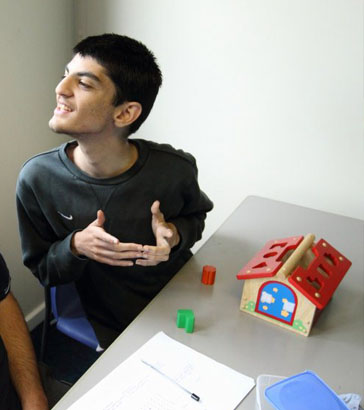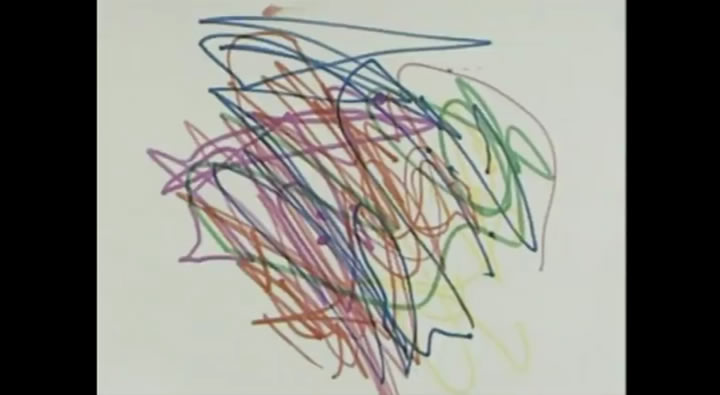
Communication is central to the realisation of the following principles that are set out in Excellence and Enjoyment: Principles of good teaching and learning (Primary National Strategy 2003):
- Ensure that every child succeeds – inclusion, high expectations.
- Build on what learners already know – structure, pace.
- Make learning vivid and real – enquiry, creativity, e-learning, group problem-solving.
- Make learning enjoyable – teaching and learning styles.
- Enrich the learning experience – cross-curricular.
- Promote assessment for learning – children as partners in learning.
How are these principles lived out in your school for children with SLD/PMLD/CLDD?

Gardner's theory of multiple intelligences (1983) promoted equal regard for different kinds of intelligence: logical/mathematical;
linguistic; musical; visual; kinaesthetic; interpersonal; intrapersonal; and naturalistic. It led to a redressing of the
curriculum balance and revaluing of children, demonstrating their aptitudes and intelligence other than through the traditional
focus on mathematics and literacy.
For children with SLD /PMLD/CLDD, this means recognising the potential for them to express
themselves other than in written and verbal form. The challenge for practitioners is enabling them to engage and progress
in gaining control over these processes.

Bruner (1986) challenged Piaget’s primacy of scientific thinking and distinguished between:
- Paradigmatic thought – logical, analytical
- Narrative thought – intuitive, creative
Implications:
- A well-rounded individual needs to develop both kinds of thinking.
- Education should value both kinds of activity.
To what extent does your school promote a balance of both kinds of activity? How do you know?

1960s: Wave 1 1967 Plowden Report
- This valued discovery learning and learning through play.
1990s: Wave 2 1999 NACCCE Report
- Interest grew during the 1990s in the wider concept of intelligence.
- The importance of self-fulfilment was stressed in psychology.
- 'Creative thinking' was instated as a key skill in the revised National Curriculum.
- Rates of change and ICT advances led to questioning of the purposes of education.
- Growing demand from industry for autonomous thinkers, risk-takers, problem-solvers.
- This led to a call for pedagogy that encourages reflection and 'possibility thinking' (Craft, 2001).
- John Elliott (2004) called for 'aesthetic pedagogy' that enlivened the senses, elevating engagement to a higher level of consciousness through a curriculum that placed communication and interaction at its heart.
- Excellence and Enjoyment: A Strategy for Primary Schools (May 2003) led to Primary National Strategies.
- The Qualifications and Curriculum Development Agency launches a website, Creativity: find it, promote it.
Duffy, 1998
Play is important in the creative process for:
- Encouraging discovery of possibilities;
- Allowing for experimentation and exploration;
- Offering practice time to enhance and consolidate knowledge, skills and understanding.
Duffy, 1998
Imaginative activity fashioned so as to produce outcomes that are both original and of value.
All Our Futures, 1999
Creativity is a state of mind in which all our intelligences are working together. It involves seeing, thinking and innovating. Although it is often found in the creative arts, creativity can be demonstrated in any subject at school or in any aspect of life.
Lucas, 2001
The NACCCE Report, All our Futures, recognised creativity is an aptitude in everyone, and that everyone can find
fulfilment in divergent forms of self-expression. Anna Craft distinguished this 'little c' creativity from 'Big C Creativity'
as exemplified in the Arts (Craft, 2001).
- Children's mark-making may be communicative, and carry meanings – what appears to be scribble may be 'emergent writing'.
- Early mark-making may show cultural signs, symbols, conventions – possibly from more than one culture.
- Children's pictorial representations are viewed by some theorists (eg Jean Piaget) as 'windows on the mind'.
- 'Children present the world as they see it and as they are capable of representing it at a particular time in their development' (Moyles, 1989).
- The arts can offer motivating and meaningful contexts for developing communication.
- To what extent do school staff understand child development in the arts? How is this reflected in using the arts for expression and communication?
For more information read:
Watch this Open University broadcast ‘Windows on the Mind’. It offers a comparison of use of representations
and symbols in young children’s drawings from two different cultures – 3-4 year olds in Scotland, and Aboriginal
children who interestingly are also exposed to aspects of western culture as well as their own indigenous traditions

Franz Mönks' original model of giftedness can be given an inclusive spin appropriate for pupils of all abilities (Mönks, 1997). According to this model, children will only realise their potential if they are motivated and engaged with the content of the activity, and if they feel empowered to make choices within an activity.

Melanie Peter has harnessed and reworked Mönks' model to identify the conditions likely to promote meaningful learning. Her original model placed play and drama at the heart of the learning process (Sherratt & Peter, 2002).

Review the teaching contexts of your school and consider how they impact on meaningful learning opportunities.
Consider some of the reports and resources referred to earlier. Synthesise their overall principles and evaluate your class
or school against these principles.

Bruner, J. S. (1966) Toward a Theory of Instruction, Cambridge, Mass.: Belkapp Press.
Craft, A (2001) 'Little c Creativity', in Craft, A, Jeffrey, B and Leibling, M
(eds) Creativity in Education. London: Continuum.
Duffy, B (1998) Supporting Creativity and Imagination in the Early Years. Buckingham: Open University Press.
Lucas, B (2001) 'Creative Teaching, Teaching Creativity and
Creative Learning', in Craft, A, Jeffrey, B and Leibling, M (eds)
Creativity in Education. London: Continuum.
Mönks, F J (1992) cited in Eyre, D (1997) Able Children in
Ordinary Schools. London: David Fulton.
